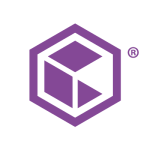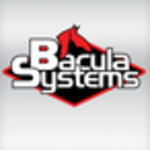What is our primary use case?
I have seen my clients use it historically for AIX systems and for applications which are pretty robust, like Domino. I use it there, or for customers who have a lot of systems and are trying to backup everything in a certain time frame. They get this benefit and the benefits of its space efficiency. It keeps the footprint down (the space), so they will not need to continue buying more disk.
Mostly, it is a flash database for Spectrum Protect, then as far as the user space for everything else, they are using mostly using NL drives. I do not know of anybody using flash all the way. Our customers are also using tape, too.
The great thing about Spectrum Protect is I do not have to be concerned with the latest, greatest technologies. I can still use what has been out there for some time. Traditional storage works perfectly with it.
We do have customers with cloud strategies, who are looking to put their backup in the cloud. A lot of customers talk about moving to cloud, but do not do it because of their size (too large). We are in the works with one customer looking to do this, but their legal people stopped pretty much anybody putting their data in the cloud, so that is on the customer side.
The average Spectrum Protect customer is going to be somewhere around 150 servers, and about 2,000 user company organizations or larger. They have usually dozens of terabytes to protect. Some companies have five Spectrum instances, and some have 30 or 40.
What is most valuable?
Its capability of just being able to handle legacy servers, and new and old platforms. That is one of the things about IBM, they made sure the product will continue to keep customers loyal.
What needs improvement?
The Spectrum Protect people know that they have to have the Spectrum Protect Plus product pick up and move faster, meaning getting to those features that Spectrum Protect can't do.
I think IBM is great with software, and it will always improve. It is just the speed of getting it out there. Faster development and deployment speed would help us as partners go out there with confidence and sell more product right now.
Though, no one can fix every solution for backup and restore.
What do I think about the stability of the solution?
Stability is excellent. This is one of IBM's strength.
What do I think about the scalability of the solution?
Scalability is excellent. This is one of IBM's strength.
How is customer service and technical support?
The technical support is general. If you need more than that, you need to know someone within IBM on the technical in-depth side. We will be the transparency to do that for our customers. That is why we are there to help manage their Spectrum Protect environments.
However, if something changes at the customer's company, the environment can go into what we call debt. If you don't watch it, it can get out of hand. That is also where we come in to help our customers if they cannot find the time. A good Spectrum Protect administrator should be spending approximately an hour to an hour and a half a day just to the administration of it. If you are spending more time than that, then it is possible that you need more training on it.
How was the initial setup?
I work on the initial setup with my teammates and technical team to verify the setup will work. I work with the IBM blueprints that they have online as a basis. I try to follow them as closely as possible, but they do not always fit all customers, because there are just three broad versions: small, medium, and large footprints.
If you follow the blueprints, it is pretty straightforward, because it is all scripted out for you. We do run into something complex with each customer setup, but we have the experience to handle it.
What's my experience with pricing, setup cost, and licensing?
You need to put it in a PoC and test it out if you can. A lot of companies have time and resources to do this for every product that they are looking at. They need to scrutinize every one of the competitors.
After, you can basically configure it and script it the way you want it to work.
Which other solutions did I evaluate?
Spectrum Protect is often compared with Commvault and EMC for overall backup solutions, then against Veeam, and Rubrik for virtualization platforms.
What other advice do I have?
Our customers have come to trust IBM. If there is ever an issue that has to be solved, IBM will throw the bench at it and make it work. If you know how to design it right the first time and you show proof that you have done it before with the customer, it will make it easier for the next customer when you go out there and try to sell them on the solution.
Backup is typically last of the things that customers want to tackle, but they have to do it sooner or later, or they will get burnt by it.
Most important criteria when customers select a solution:
- Skill and experience in the product
- Relationships
- Confidence in product.
Disclosure: My company has a business relationship with this vendor other than being a customer: Partner.













